Manotick Garden Health: Spot Fall Spider Mites Early
Keep your Manotick garden thriving this fall! Learn the crucial signs of spider mite infestations and how to manage them effectively before winter sets in. Need help now? Request a quote for professional garden care today!
- Look for tiny yellow leaf spots (stippling) and fine webbing.
- Use the 'white paper test' to confirm tiny moving mites.
- Wash affected plants thoroughly with water, especially undersides.
- Perform a meticulous fall cleanup to remove overwintering sites.
- Keep plants healthy and properly watered to boost natural resistance.
Introduction: Keeping Manotick Gardens Glorious (Even When Tiny Terrors Arrive!)
Ah, fall in Manotick! The crisp air, the stunning colours – our gardens are truly putting on a show. From vibrant mums to the last sturdy perennials, it's a beautiful time for landscaping right across Ottawa. But wait... lurking beneath those lovely leaves might be some unwelcome guests: spider mites! These tiny terrors, barely visible, can quickly turn your glorious garden display into a sad, stressed-out scene. Especially here, where the Ottawa climate gives our plants a shorter growing season and demands they be strong for winter, catching these pests early is absolutely crucial. Whether you're tending flower beds in Manotick or nurturing shrubs in nearby Barrhaven, spotting spider mites sooner rather than later makes controlling them much easier. Don't worry, we're here with friendly, expert advice from resources like the Master Gardeners of Ottawa-Carleton to help you keep your garden glorious, even when these minuscule monsters try to move in! Let's learn how.
Meet the Mites: Understanding Your Eight-Legged Garden Foes
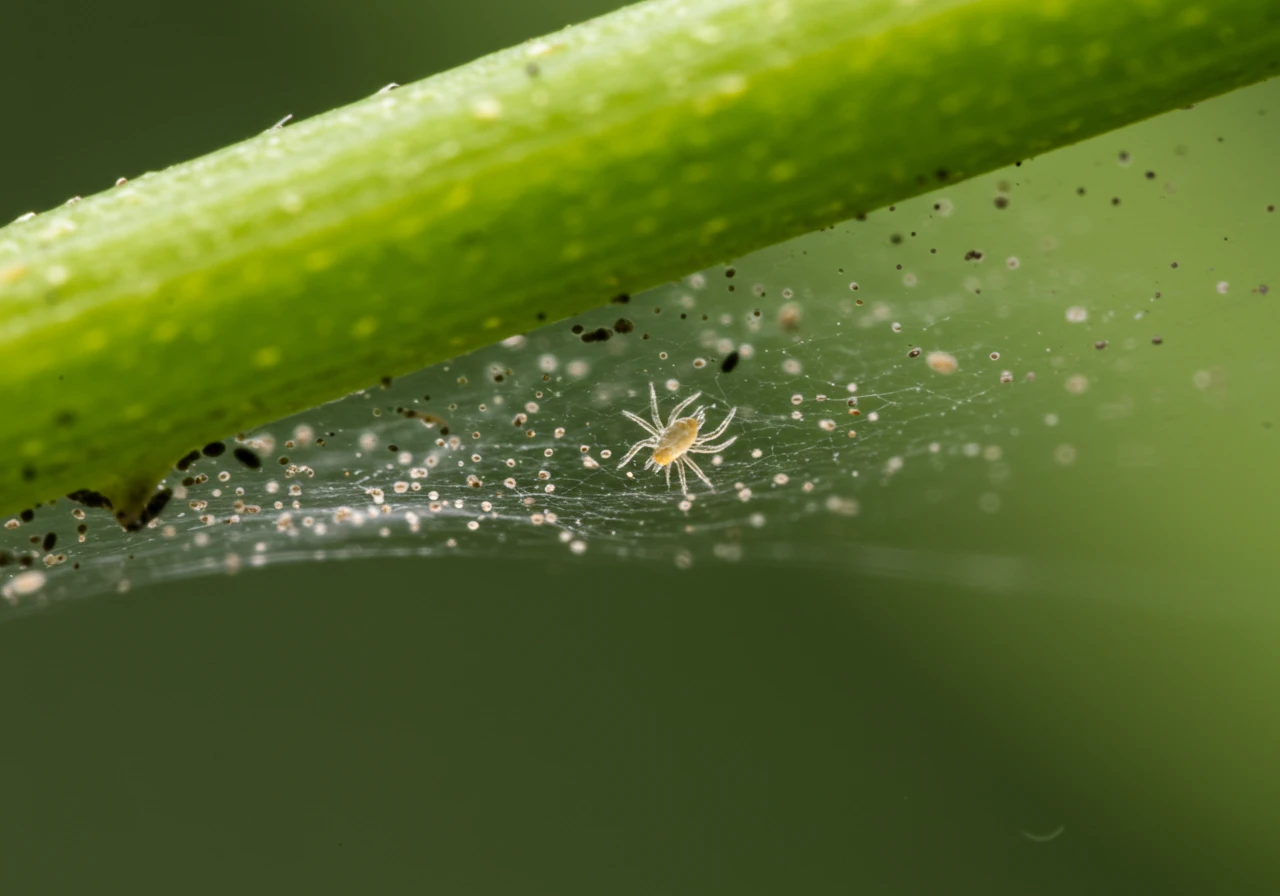
Okay, let's talk about spider mites. These aren't your friendly neighborhood Spiderman, folks! They're actually tiny arachnids, more closely related to spiders and ticks than insects. Think *really* tiny – you often need a magnifying glass to see them clearly. They look like minuscule dots moving around, often preferring the undersides of leaves on your precious plants.
So, what's the big deal with these microscopic munchers? Well, these little guys have piercing mouthparts they use to suck the life (okay, the chlorophyll) right out of your plant cells. The first sign gardeners in Manotick or Barrhaven usually spot is tiny yellow or white speckles on the leaves, called *stippling*. As the infestation grows, you might see fine, silky webbing, especially between leaves and stems – kind of like a spooky Halloween decoration, but *way* less fun for your landscaping efforts. Heavily infested plants look sickly, bronzed, or yellow, and leaves might dry up and fall off entirely.
Their life cycle is annoyingly fast, especially when it's warm and dry. From egg to adult can take just a week or two! This means populations can explode seemingly overnight. Why do we often notice them more in the fall here in the Ottawa area? Several reasons! As our gardens start winding down, plants might be a bit stressed heading into winter. Also, late summer and early fall can sometimes bring drier spells before the real autumn rains kick in. Dry, dusty conditions are like a five-star resort for spider mites. If your plants are already struggling with something like poor drainage, perhaps because you have that heavy clay soil common in parts of Manotick or Osgoode [Improving Manotick Clay Soil Drainage for Rain Gardens], they become even easier targets. Consistent watering, like ensuring your system is efficient after doing [Summer Irrigation Checks in Manotick to Save Water], helps keep plants healthy and less attractive to pests.
The most common culprit you'll likely encounter is the *Two-spotted spider mite*. They love a wide variety of plants – flowers, vegetables, shrubs, even some trees. Come fall, these mites look for cozy spots to overwinter, often hiding in fallen leaves and plant debris. That’s why a thorough [Manotick Fall Cleanup and Winter Lawn Prep] is so important – it removes their winter hideouts before they settle in. Need some guidance on getting your yard ready? Our [Complete Manotick Fall Cleanup and Winter Prep Guide] offers step-by-step advice. If tackling these tiny terrors or any other garden task feels overwhelming, remember that professional help is available through our [Full Range of Landscaping Services].
Playing Detective: Your Guide to Early Spider Mite Detection
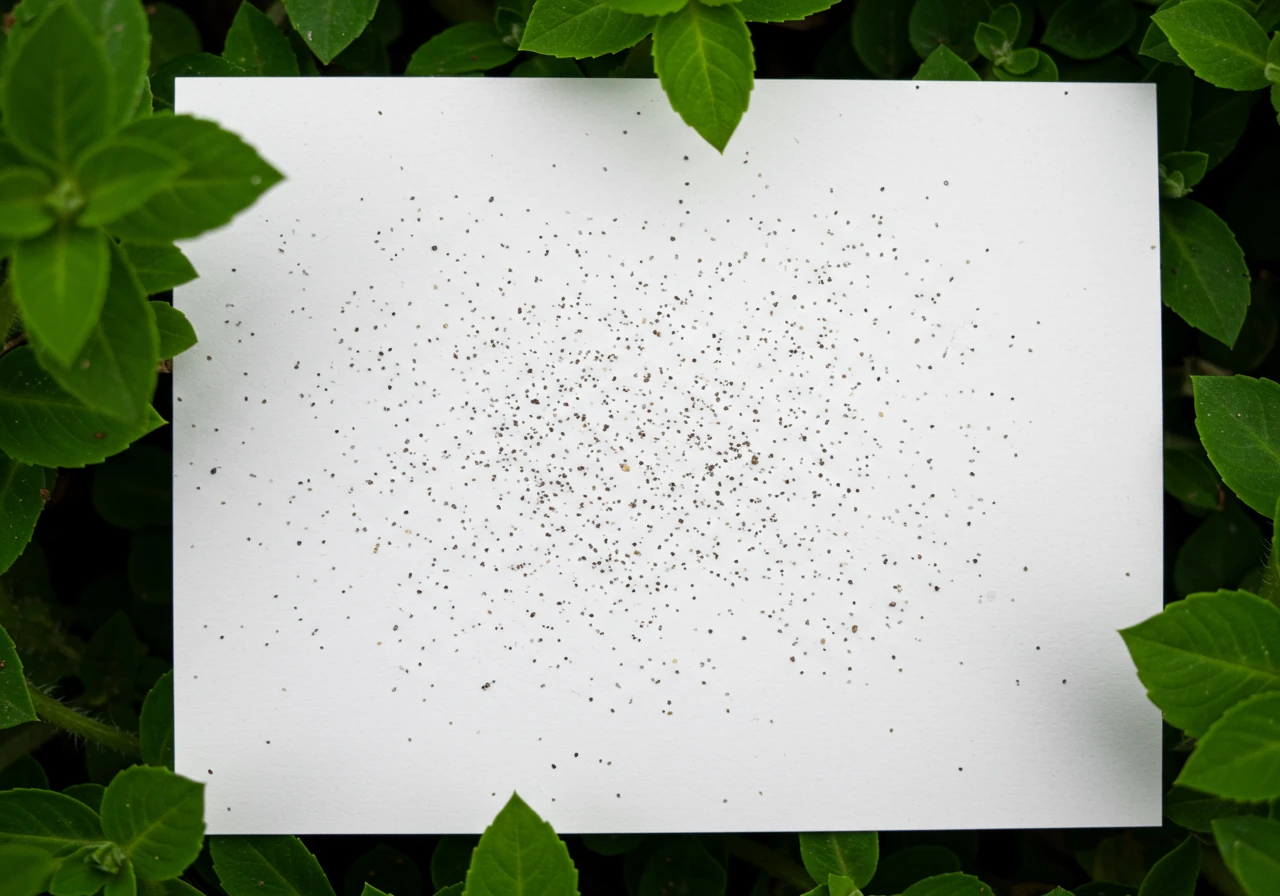
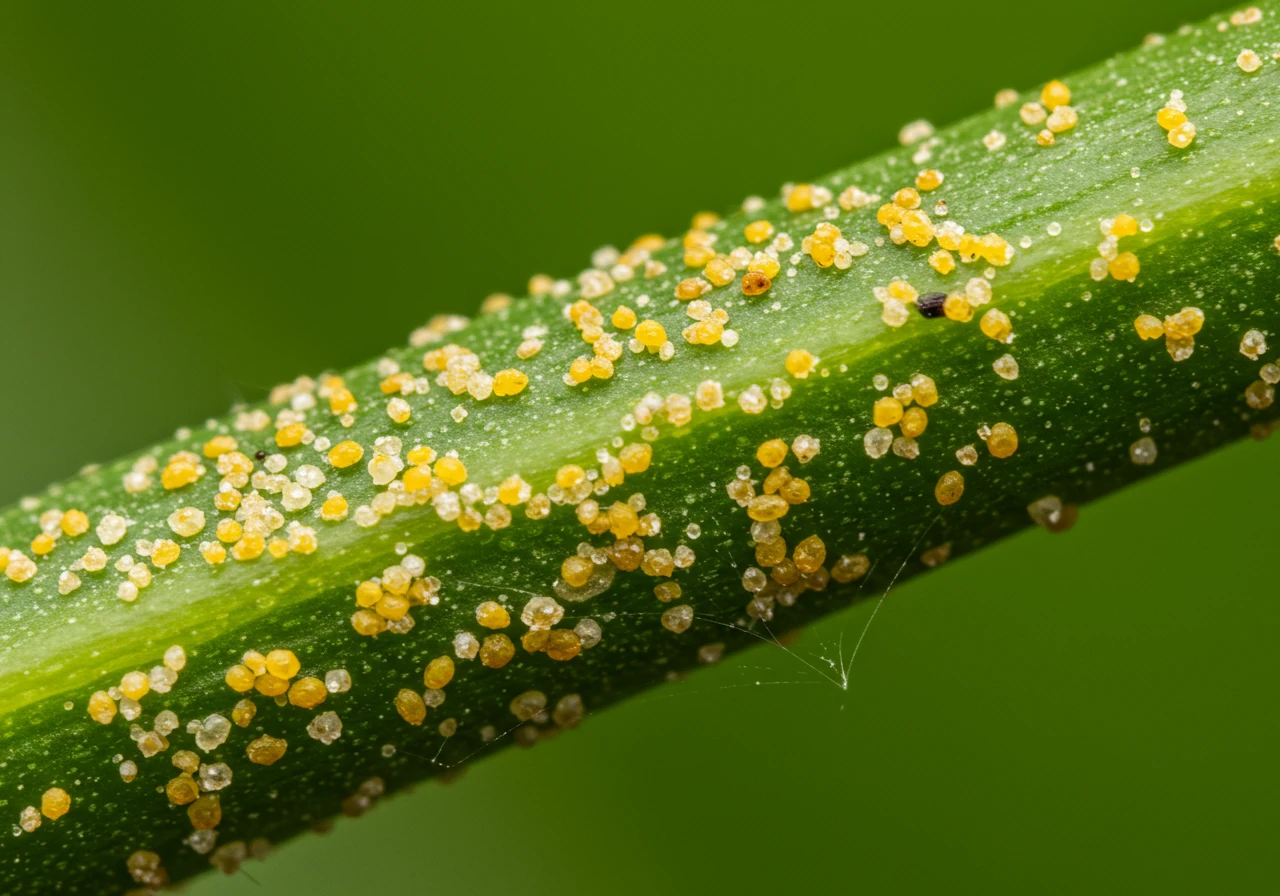
Okay, grab your magnifying glass and maybe a deerstalker cap (optional, but fun!), because it's time for some garden detective work! Catching spider mites early is the *key* to stopping a small problem from becoming a full-blown plant horror story in your Manotick backyard. These tiny troublemakers are masters of disguise, but with a little know-how, you can spot them before they really dig in.
Decoding the Clues: What Spider Mite Damage Looks Like
- Tiny Yellow or White Dots (Stippling): This is often the very first sign. Look closely at the tops of leaves. Do you see minuscule pale spots, like someone sprinkled tiny grains of sand? That's stippling, caused by mites piercing individual plant cells. It often starts on lower, older leaves.
- Fine, Silky Webbing: As the mite population grows, they start spinning fine webs. Check where leaves meet stems, between leaves, or on leaf undersides. It looks less like a spider's organized web and more like wispy strands of silk, sometimes collecting dust. Don't confuse it with actual spider webs, which are usually larger and more defined.
- Off-Colour Leaves: If the stippling gets bad, entire leaves can start looking faded, yellowed, or even bronzed and dirty. They lose their healthy green lustre because the chlorophyll is being drained.
- Leaf Drop: In severe cases, leaves will dry up, turn brown, curl, and eventually fall off the plant. The plant will look generally stressed and unhappy.
Your Step-by-Step Inspection Guide
Ready to go undercover? Here’s how to inspect your plants like a pro:
- Timing is Everything: Aim to check susceptible plants weekly, especially during warm, dry spells common in late summer/early fall around Ottawa. Check resources like the Agriculture and Agri-Food Canada site for regional pest updates.
- Get Up Close: Don't just glance! Get down and really look at the leaves, especially the undersides – mites love hiding there. A magnifying glass is your best friend here.
- The White Paper Test: Hold a sheet of plain white paper under a suspicious leaf or branch. Gently tap or shake the foliage over the paper. Wait a few seconds. See tiny specks moving around? Those are likely spider mites! They'll look like moving pepper flakes. Real dirt won't crawl away.
- Focus on Hot Spots: Pay extra attention to plants near dusty areas (like pathways or construction) or those in direct, hot sun, as these conditions favour mites. Also check any plants showing those early stippling signs.
- Know Your Usual Suspects: Certain plants are mite magnets. Keep an extra close watch on roses, beans, tomatoes, fruit trees, some evergreens (like Alberta Spruce), and houseplants that spent the summer outdoors, whether you're gardening in Manotick, Nepean, or Richmond.
Mistaken Identity: Is it Mites or Something Else?
Sometimes, plant problems look similar. Here’s a quick comparison:
| Symptom | Spider Mites | Other Potential Causes |
|---|---|---|
| Tiny Pale Spots (Stippling) | Yes, uniform, often starting lower leaves | Thrips (silvery, often with black frass), Lace bugs (similar stippling, often see bugs) |
| Webbing | Yes, fine, silky, often in leaf joints | Actual spiders (larger, more patterned webs) |
| Yellowing Leaves | Yes, overall faded, bronzed, or yellow look | Nutrient deficiency (specific patterns), Over/Underwatering, Fungal disease |
| Visible Pests | Tiny moving dots (magnifier often needed) | Aphids (small pear-shaped insects), Whiteflies (tiny white flying insects), Thrips (slender winged insects) |
| Leaf Drop / Browning | Yes, in severe cases, leaves dry out | Drought stress, Sunscald, Fungal Blight, Root problems |
Regular vigilance is your best defense. Consistent garden care, like that offered through a City Garden Maintenance Service, includes keeping an eye out for pests. Removing potential overwintering sites through thorough fall cleaning is also vital; whether you DIY or use an Ottawa Property Cleanup Service or a specific Manotick Yard Cleanup Service, getting rid of fallen leaves and debris helps immensely. Improving plant health through good Soil Preparation can often prevent deficiencies that mimic pest damage. If spotting or managing pests feels like too much, remember our Full Range of Landscaping Services includes expert pest identification and control solutions.
Found 'Em! Eco-Friendly Ways to Evict Mites from Your Manotick Garden
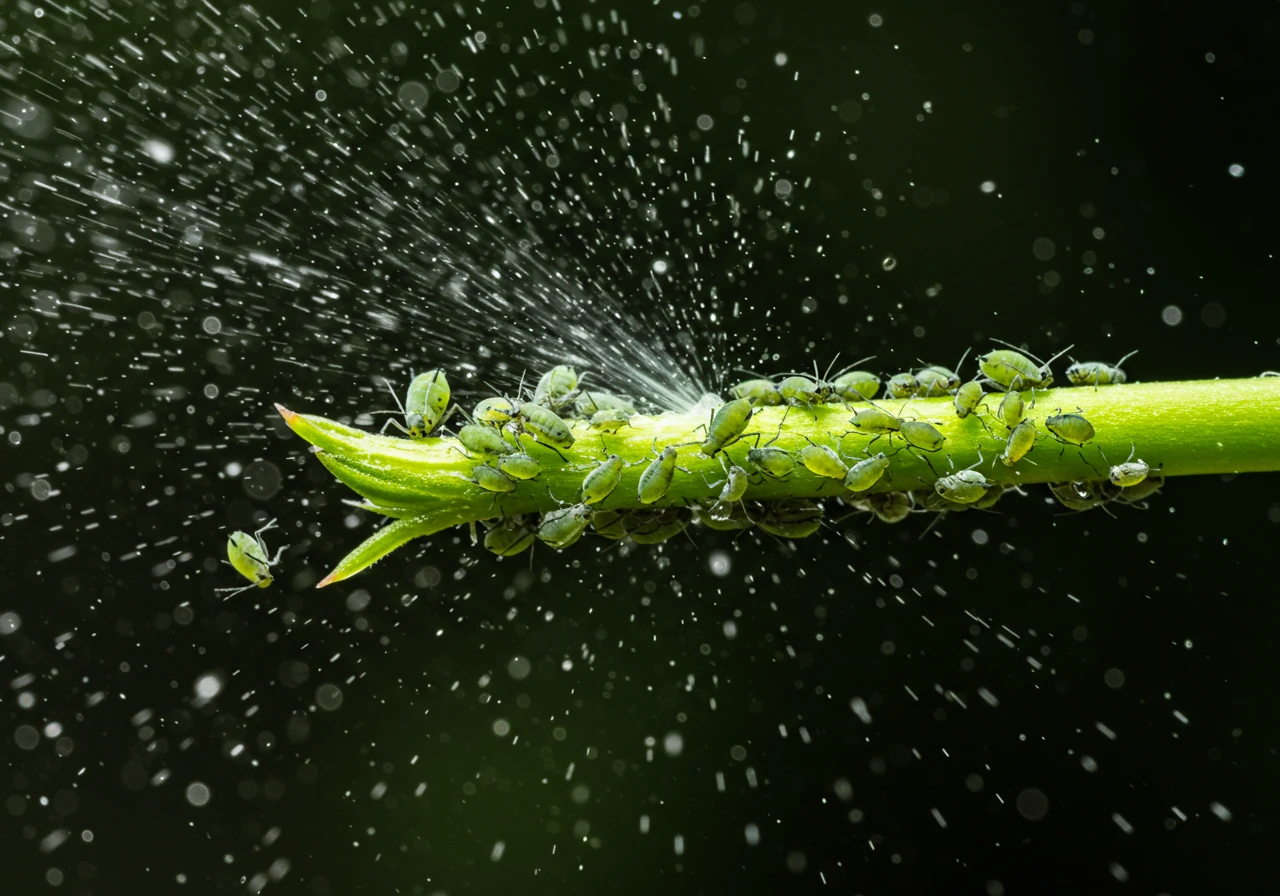
Okay, detective work complete! You’ve spotted those pesky spider mites setting up camp in your beloved Manotick garden. Don’t panic! Before you reach for harsh chemicals, let’s explore some kinder, gentler ways to show these eight-legged freeloaders the door. Many gardeners in communities like Kars and Vernon prefer these eco-friendly approaches, keeping their landscaping healthy for beneficial insects and pollinators too.
First Line of Defense: The Power Shower!
Sometimes, the simplest solutions are surprisingly effective. Spider mites *hate* moisture and being disturbed.
- Action: Grab your garden hose and give affected plants a strong spray of water, focusing on the undersides of leaves where mites congregate. Do this early in the morning so leaves can dry before evening, reducing fungal disease risk.
- Why it Works: The force dislodges many mites and their delicate webbing. Plus, increasing humidity makes the environment less welcoming for them. Repeat every few days for moderate infestations. This is often enough to knock back small populations.
Soap 'Em Out: Insecticidal Soap Solutions
If the water spray isn't quite cutting it, insecticidal soap is the next step up. These aren't your dish detergents (which can harm plants!), but specially formulated soaps that target soft-bodied pests.
- Action: You can buy ready-to-use or concentrate insecticidal soaps, or even make a simple version (though commercial ones are tested for plant safety). They work on contact, so thorough coverage is key.
- Why it Works: The fatty acids in the soap penetrate the mites' outer shell, disrupting their cell membranes and causing dehydration and suffocation. It has minimal impact on beneficial insects once dry.
Quick Guide: Applying Insecticidal Soap Safely
- Read the Label: Always follow the product instructions for mixing and application rates. If making your own, use a pure soap like Castile, *not* detergent (around 1-2 tsp per litre of water is a common starting point, but test first).
- Test Spot: Apply to a small, inconspicuous area of the plant first and wait 24-48 hours to check for leaf damage (phytotoxicity). Some plants are sensitive!
- Choose Your Time: Apply in the early morning or late evening when temperatures are cool (ideally below 27°C) and the sun isn't intense, reducing stress on the plant and maximizing effectiveness before the soap dries too quickly. Avoid windy days.
- Get Full Coverage: Spray *thoroughly*, making sure to coat the undersides of leaves, stems, and leaf joints where mites hide. Remember, it only works on mites it directly contacts.
- Repeat as Needed: Reapply according to label directions (often every 5-7 days) until the population is under control.
Slick Solutions: Horticultural Oils (Including Neem)
Horticultural oils, including popular Neem oil, work by smothering mites (and their eggs!).
- Action: Mix and apply according to label directions, again ensuring thorough coverage. Neem oil also has some insect growth regulator and anti-feedant properties.
- Why it Works: The oil coats the mites, blocking their breathing pores (spiracles).
- Caution: Like soaps, oils can burn leaves if applied in direct sun or high heat. Always test a small area first. Avoid applying to water-stressed plants. Different types exist (dormant oils, summer oils), so choose the right one for the season and plant type. Making smart choices in Garden Materials Selection for Healthier Plants can sometimes reduce the need for interventions later.
Calling in Reinforcements: Biological Controls
This involves releasing beneficial insects, like predatory mites (e.g., Phytoseiulus persimilis), that *eat* spider mites. It's super eco-friendly!
- The Catch for Ottawa Fall: While fantastic during warmer months, introducing predatory mites in late fall in the Ottawa region can be tricky. As temperatures drop, their activity slows down, and the declining spider mite population might not sustain them. It’s generally more effective earlier in the season. Consider consulting local suppliers or resources like the Ontario Ministry of Agriculture, Food and Rural Affairs (OMAFRA) for suitability.
Prevention is Key: Long-Term Strategies
Remember, healthy plants are less susceptible! Consistent watering, proper fertilization (part of good Ongoing Lawn Care and Garden Health), and good air circulation help. Planning a new space? Consider mite-resistant varieties during your Expert Garden Installation Process. And *definitely* don't skip fall cleanup! Removing dead leaves and debris eliminates overwintering spots. Need a hand with that big task? An Ottawa Property Cleanup Service for Pest Prevention can make a huge difference.
Dealing with pests can be frustrating, but these eco-friendly methods offer effective control while being kinder to your Manotick garden's ecosystem. If you have questions about specific products or large infestations, don't hesitate to reach out for professional advice – your privacy is always respected, as outlined in our Clean Yards Privacy Policy.
Fortifying Your Flora: Preventing Future Fall Infestations
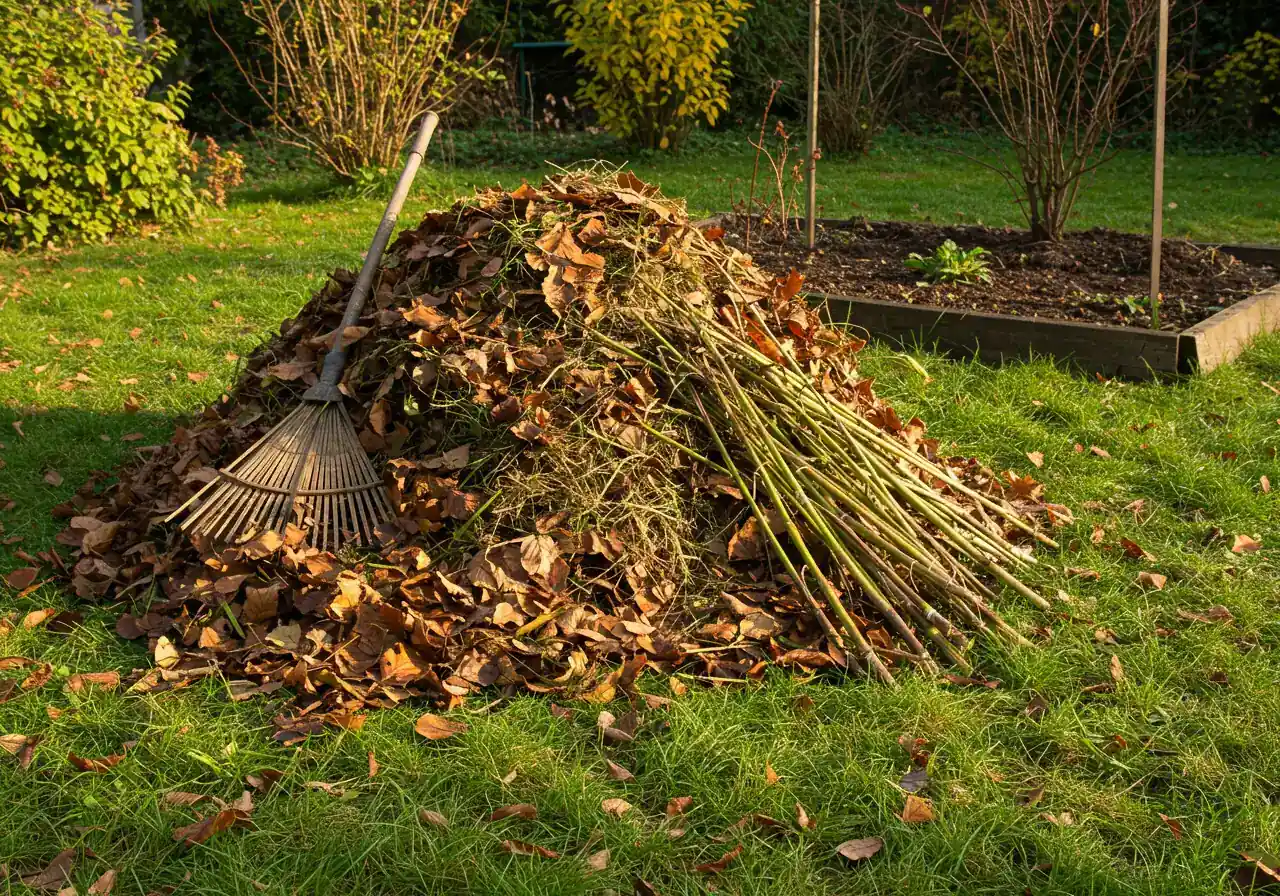
Okay, so you've shown those spider mites the door – fantastic! But like any uninvited guest who *really* enjoyed the snacks, they might try to sneak back in next year. Let's talk about "Fortifying Your Flora," making your garden less appealing to future infestations before they even think about settling down. Think of it as building a really nice, invisible fence around your plants, but specifically designed to keep tiny terrors out! Prevention truly is the best medicine in landscaping and gardening.
The Great Fall Escape Plan (Theirs, Not Yours!)
Spider mites are sneaky survivors. They love to play hide-and-seek over winter, tucking themselves away in fallen leaves, dead plant stems, and other garden debris left lying around. Your mission, should you choose to accept it (and trust us, you should!), is to eliminate their cozy winter hideouts! A thorough fall cleanup is your absolute best secret weapon against their return. This means:
- Raking up and removing fallen leaves, especially from garden beds around plants that were previously affected or are known mite favourites.
- Cutting back dead perennial stalks after a few good frosts have knocked them back.
- Clearing out spent annuals and removing leftover vegetable garden debris.
Don't just pile this stuff in a corner! Getting it completely off your property removes the overwintering mites and their eggs. If the scale of the task feels more like a marathon than a pleasant afternoon chore, professional help is always an option. Whether you're right here in Manotick or need assistance further afield, like a Metcalf Garden Clean Up Service or even a Marionville Property Cleanup Service, getting that potential pest habitat cleaned up makes a *huge* difference for next spring. Explore our past transformations to see the impact of professional cleanup.
Water Wisely, Especially in Fall
Remember how spider mites thrive in dry, dusty conditions? Let's not roll out the welcome mat for them! Even as temperatures cool down in the Ottawa area, ensuring your plants aren't drought-stressed heading into winter is important. In neighbourhoods like Barrhaven or Nepean, where heavier clay soils are common, this often means watering *deeply* but *less frequently*. You want the water to penetrate down to the root zone. Allow the top inch or two of soil to dry out between waterings to prevent root rot, but don’t let plants get so dry they become weak and vulnerable – stressed plants are practically sending out engraved invitations to pests. Watering at the base of plants, perhaps with a soaker hose, is usually better than overhead sprinkling in the fall, as it keeps foliage drier and less prone to fungal diseases. Find helpful tips on the City of Ottawa's Trees and Plants page.
Happy Plants = Fewer Pests
It's a simple truth: healthy, vigorous plants are naturally more resistant to pests and diseases. Think of it like us taking our vitamins!
- Mulch Magic: Applying a 2-3 inch layer of organic mulch (like shredded bark, wood chips, or compost) after the ground has cooled but before it freezes hard helps insulate roots, conserve soil moisture (fighting that dryness mites love!), and suppress weeds that can compete with your plants or harbor pests. Check out our Mulching and Edging services.
- Feed Smart: Generally, avoid pushing heavy nitrogen fertilizers late in the season. This can stimulate weak, sappy growth that's incredibly attractive to sucking insects like mites. Focus on promoting strong root systems. Following good overall practices is key; consistent Garden Maintenance helps keep plants in top shape year-round. When engaging any service provider, it's wise to understand the scope of work, often detailed in their service agreements or Terms and Conditions.
Keep Your Eyes Peeled
Even with the best preventative measures, nature can be unpredictable. Continue to make quick checks part of your routine, especially on those plants mites seem to adore. A quick peek under leaves now and then, maybe doing the white paper test occasionally, allows you to catch any sneaky stragglers *before* they can build up steam next season. And rest assured, should you ever need to contact us for advice or service, we value your privacy; you can review our commitment in the Clean Yards Privacy Policy. Check our Google reviews to see what clients say!
Simple Fall Checklist
Rake and remove leaves from lawns and garden beds.
Cut Back Perennials
Cut back dead or diseased perennial stems after frosts.
Clear Out Annuals
Remove spent annual flowers and vegetable plants.
Water Deeply (If Dry)
Give shrubs and trees a deep watering before the ground freezes, if conditions have been dry.
Apply Mulch
Apply a fresh layer of mulch around perennials, shrubs, and trees.
Tool Care
Clean and sharpen your garden tools before storing them for winter.
By taking these preventative steps this fall, you're not just tidying up; you're actively investing in a healthier, more resilient, and less mite-friendly garden for next year. Here's to fortified flora! Need help with sod installation or other landscape enhancements? We can help!
Chemical Controls: When Necessary and How to Use Responsibly
Okay, let's be honest. Sometimes, despite our best eco-friendly efforts with water sprays and soaps, those spider mites just throw a massive party we can't easily shut down. For *severe* infestations where your plants are truly suffering, or perhaps on larger landscaping projects like some you might find out in Greely or Metcalfe where pests can spread like wildfire, chemical controls (miticides) might become a *last resort*. Think of them as the emergency toolkit – necessary sometimes, but needing careful handling in your gardening routine.
Important: Responsible Use
Using these products responsibly is key. This isn't about spraying willy-nilly! *Always* read and follow the product label directions *to the letter*. That label is your guide, telling you exactly how much to use, which plants it's safe for, and crucial safety precautions. This usually includes wearing protective gear like gloves and eyewear, and spraying on calm days (not windy!) when pollinators aren't active (early morning or late evening is often best). Remember, these chemicals can harm beneficial insects like bees and ladybugs, and runoff can affect the wider Ottawa environment. Consistent misuse can even lead to mites developing resistance – yikes!
Before reaching for chemicals, double-check that you've exhausted other options. Have you tried physical removal? Are prevention steps like thorough Property Clean Up in place? Sometimes, a deep clean, like what's offered by a Marionville Garden Clean Up Service, removes enough hiding spots to prevent needing stronger measures. Using chemicals near public areas also requires extra care, respecting the efforts of services like a City Property Cleanup Service. If you're ever unsure about tackling a severe pest problem or choosing the right approach, please ask for professional advice – you can easily get in touch via our Thank You page contact form or provide estimate feedback if you've received one. Making safe, informed choices benefits everyone. And if you need help getting things clean *before* pests become a huge issue, a dedicated service like a Metcalf Garden Clean Up Service or City Garden Clean Up Service is a great preventative step.
Key Insights: Your Manotick Spider Mite Cheat Sheet
Spider Mite Management Summary
Feeling a bit overwhelmed by the thought of tiny, eight-legged critters taking over your beautiful Manotick garden? Don't sweat it! Dealing with spider mites, especially in the fall, is mostly about knowing what to look for and acting smart. Here's your quick cheat sheet with the key takeaways to keep your landscaping looking lovely:
- Spot 'Em Fast: Be a garden detective! Look closely for tiny yellow dots (stippling) on leaves and fine, wispy webbing, especially underneath. Grab a white piece of paper, tap a leaf over it – see tiny moving specks? Busted! Early detection in Manotick is half the battle against these minuscule pests.
- Wash 'Em Out: Often, your first and best move is a good, strong blast of water from the hose, aimed at the undersides of leaves. Do this early in the day so foliage dries before nightfall. It physically knocks mites off and they *hate* the damp – sometimes it’s all you need for small invasions. Simple, effective gardening!
- Tidy Up Their Winter Hotel: Spider mites love hiding in fallen leaves and garden gunk over winter. A *thorough* fall cleanup is non-negotiable! Removing this debris eliminates their hideouts. Whether you tackle it yourself or utilize an Expert Ottawa Yard Cleanup Service to get every last leaf, this step is crucial. The same principle applies whether you need a Detailed City Yard Cleanup Service in denser areas or help further out, perhaps like residents needing a Dedicated Marionville Yard Cleanup Service – getting rid of their winter shelters is key everywhere around Ottawa.
- Boost Plant Defenses: Healthy plants fight back better! Keep them properly watered heading into fall (not waterlogged, just consistently moist, especially important for plants near walkways or structures). Applying a good layer of mulch is also fantastic – it conserves moisture and protects roots. Great Mulching and Edging Services not only make beds look sharp but significantly contribute to plant health and pest resistance.
- Don't Go It Alone: Feeling overwhelmed by a mite explosion or just unsure about the next steps for your specific plants in Greely or right here in Manotick? Sometimes calling in the pros is the smartest move. If you need advice or hands-on help with pest management or other landscaping challenges, please Contact Us – we're here to help your garden thrive!
*Note: Activity peaks in hot, dry conditions, often prevalent in late summer/early fall before heavy rains or cold arrive.
FAQs: Your Ottawa & Manotick Spider Mite Questions Answered
Are spider mites really that big of a problem in Ottawa and Manotick?
They certainly can be! While not *every* garden gets hit hard, our sometimes hot, dry spells create perfect conditions for them. Stressed plants are easy targets. From leafy Manotick suburbs to areas like Metcalfe needing diligent care, like that provided by a dedicated Metcalf Yard Cleanup Service, these pests can quickly damage landscaping if ignored. Vigilance is key in our climate!
What are the *absolute earliest* signs I should look for on my plants?
Forget big webs initially! Look for tiny yellow or whitish dots sprinkled across the leaf surface – this is called *stippling*. Flip the leaf over; mites often hide underneath. You might need a magnifier. If you shake a leaf over white paper, you might see tiny specks moving. Catching this early makes gardening *much* easier.
My neighbour in Greely swears by just blasting them with water. Does that actually work?
Your Greely neighbour is onto something! A strong spray of water, especially on leaf undersides, physically knocks mites off and disrupts their webbing. They hate moisture. It's a great *first step* and often works for mild cases. Just do it early in the day so leaves dry, reducing disease risk for your plants.
I missed the fall cleanup window. Are my plants doomed next spring?
Not necessarily doomed! While a thorough fall cleanup is best for removing overwintering mites, it's never too late to tidy up lingering debris early in spring. Removing dead leaves and stalks *as soon as possible* still helps reduce the starting population. If it feels overwhelming, an Expert Ottawa Garden Clean Up Service can help get things back on track.
Are some areas around here, like Barrhaven, more prone to spider mites than others?
Not inherently, but *conditions* can differ. Areas with newer landscaping (potentially stressed plants), dusty conditions (nearby construction), or microclimates with hotter, drier spots might see more issues. Whether you're in Barrhaven or Manotick, factors like plant health, watering practices, and nearby host plants matter more than the specific neighbourhood address itself.
Can Clean Yards help if I have a really bad spider mite problem?
Yes, absolutely! Dealing with severe infestations can be tricky. We can assess the situation, advise on the best course of action (including responsible treatments if needed), and help restore plant health. You can learn more About Us and our approach. For widespread issues, solutions similar in scope to a full Metcalf Property Cleanup Service might be needed, tailored for your specific Ottawa property.
Conclusion: Enjoy a Healthy, Mite-Free Manotick Garden This Fall and Beyond!
So there you have it! Taking a little time this fall to tackle those sneaky spider mites means you're paving the way for a gorgeous, thriving Manotick garden next spring and beyond. Think of it as putting those tiny terrors properly to bed before winter arrives – no slumber parties allowed on your prized perennials! By staying vigilant with your garden checks, committing to that crucial fall cleanup, watering wisely, and generally keeping your plants healthy and happy, you’re building the best defence against future infestations. You've absolutely got this! Enjoy the crisp Ottawa autumn air and the beauty of your landscaping efforts.
Here’s how to keep the momentum going:
- Feeling a bit overwhelmed or facing a mite mob that just won't quit? For expert advice or hands-on landscaping and garden care help right here in Manotick, Osgoode, Greely, and nearby communities, reach out for a friendly consultation! We're happy to help diagnose and treat pest problems.
- Want a simple way to remember all the key preventative steps? Consider bookmarking this page or our fall cleanup guide – it's a great cheat sheet for your autumn garden tasks!
- Show off your beautiful fall garden pics or share your own successful pest-fighting tactics! We love seeing garden victories!

